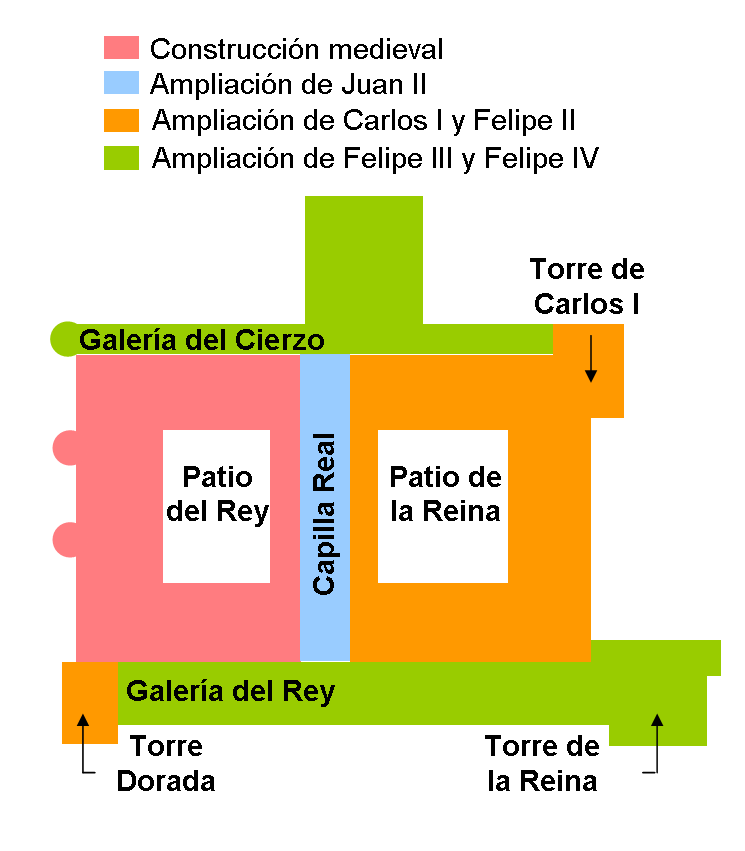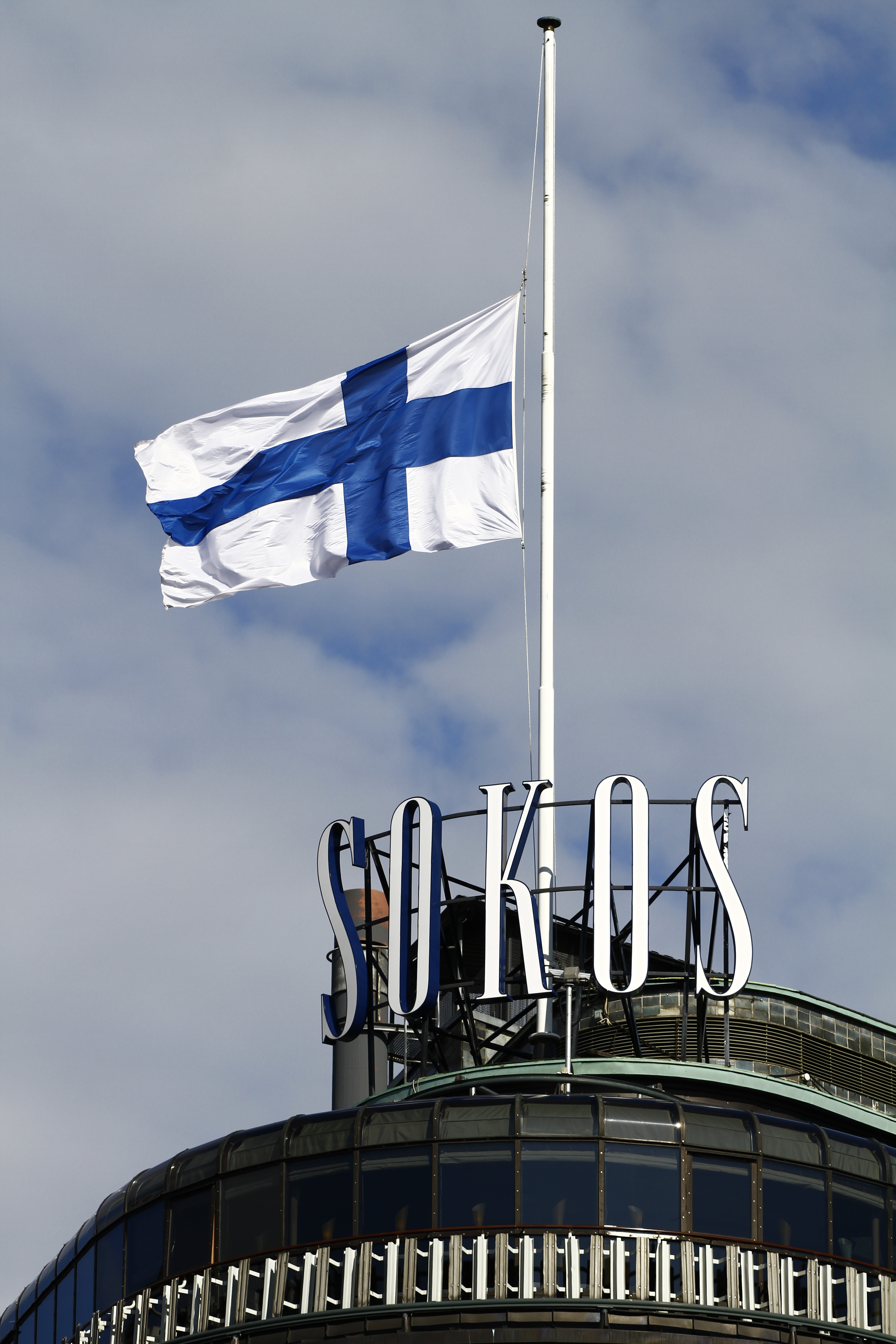|
Flag Of Spain (1785-1873 And 1875-1931)
The national flag of Spain ( es, Bandera de España), as it is defined in the Constitution of 1978, consists of three horizontal stripes: red, yellow and red, the yellow stripe being twice the size of each red stripe. Traditionally, the middle stripe was defined by the more archaic term of , and hence the popular name (red- weld). The origin of the current flag of Spain is the naval ensign of 1785, under Charles III of Spain. It was chosen by Charles III himself among 12 different flags designed by Antonio Valdés y Bazán (all proposed flags were presented in a drawing which is in the Naval Museum of Madrid). The flag remained marine-focused for much of the next 50 years, flying over coastal fortresses, marine barracks and other naval property. During the Peninsular War the flag could also be found on marine regiments fighting inland. Not until 1820 was the first Spanish land unit (The La Princesa Regiment) provided with one and it was not until 1843 that Queen Isabella ... [...More Info...] [...Related Items...] OR: [Wikipedia] [Google] [Baidu] |
Spanish Fess
In heraldry and vexillology, a Spanish fess is a term occasionally used to describe the central horizontal stripe of a tricolour or triband flag that is twice the width of the stripes on either side of it. The name is based on the most well-known example of this style of flag, the flag of Spain, and in analogy to the equivalent term for vertically striped flags, the Canadian pale. Looser definition As with the Canadian pale, a looser definition of Spanish fess also exists, in which the central stripe is considerably larger than, but not necessarily twice the width of the two outer stripes. Other flags featuring a Spanish fess include the national flags of Lebanon, Cambodia, Laos and Tajikistan, the restored flag of Libya, the flag of French Polynesia, the flag of Prussia, and the proposed national flag of Cyprus. Had the flag of Israel lacked the top and bottom white bands, it too would have featured a Spanish fess. Flag gallery 1:2:1 proportions File:Flag of Cambodia.sv ... [...More Info...] [...Related Items...] OR: [Wikipedia] [Google] [Baidu] |
Pantone
Pantone LLC (stylized as PANTONE) is a limited liability company headquartered in Carlstadt, New Jersey. The company is best known for its Pantone Matching System (PMS), a proprietary color space used in a variety of industries, notably graphic design, fashion design, product design, printing and manufacturing and supporting the management of color from design to production, in physical and digital formats, among coated and uncoated materials, cotton, polyester, nylon and plastics. X-Rite, a supplier of color measurement instruments and software, purchased Pantone for US$180 million in October 2007, and was itself acquired by Danaher Corporation in 2012. Overview Pantone began in New Jersey in the 1950s as the commercial printing company of brothers Mervin and Jesse Levine, M & J Levine Advertising. In 1956, its founders, both advertising executives, hired recent Hofstra University graduate Lawrence Herbert as a part-time employee. Herbert used his chemistry knowledge to ... [...More Info...] [...Related Items...] OR: [Wikipedia] [Google] [Baidu] |
Yacht Ensign
A yacht ensign is a flag allowed by some nations to be hoisted as the national ensign (instead of the civil ensign) by yachts. As with any other civil ensign, the yacht ensign is the largest flag on board, and is normally flown at the stern (rear) of the ship. Yacht ensigns differ from merchant ensigns in that their use indicates that the yacht is not carrying any cargo Cargo consists of bulk goods conveyed by water, air, or land. In economics, freight is cargo that is transported at a freight rate for commercial gain. ''Cargo'' was originally a shipload but now covers all types of freight, including tran ... which requires a customs declaration. Carrying commercial cargo on a boat with a yacht ensign is deemed to be smuggling in many jurisdictions. References {{Reflist Ensigns Yachting Lists and galleries of flags ... [...More Info...] [...Related Items...] OR: [Wikipedia] [Google] [Baidu] |
Politics Of Spain
The politics of Spain takes place under the framework established by the Constitution of 1978. Spain is established as a social and democratic sovereign countryFirst article. wherein the national sovereignty is vested in the people, from which the powers of the state emanate. The form of government in Spain is a parliamentary monarchy, that is, a social representative democratic constitutional monarchy in which the monarch is the head of state, while the prime minister—whose official title is "President of the Government"—is the head of government. Executive power is exercised by the Government, which is integrated by the prime minister, the deputy prime ministers and other ministers, which collectively form the Cabinet, or Council of Ministers. Legislative power is vested in the Cortes Generales (''General Courts''), a bicameral parliament constituted by the Congress of Deputies and the Senate. The judiciary is independent of the executive and the legislature, ... [...More Info...] [...Related Items...] OR: [Wikipedia] [Google] [Baidu] |
Flag Of The North Atlantic Treaty Organisation
The flag of NATO (North Atlantic Treaty Organization) consists of a dark blue field charged with a white compass rose emblem, with four white lines radiating from the four cardinal directions. Adopted three years after the creation of NATO, it has been the flag of NATO since October 14, 1953. The blue color symbolizes the Atlantic Ocean, while the circle stands for unity. History The North Atlantic Treaty Organization was established on April 4, 1949, when twelve nations signed the North Atlantic Treaty to counteract the perceived threat from the Soviet Union. The first flag used by NATO was unveiled October 5, 1951, by Gen. Dwight Eisenhower, who helped design it. The 1951 flag consisted of a green field with the coat of arms of the Supreme Headquarters Allied Powers Europe (SHAPE), which still uses the flag. NATO began looking for an emblem to differentiate it from SHAPE, a task handled by the newly formed Information Policy Working Group. After several discussions, it co ... [...More Info...] [...Related Items...] OR: [Wikipedia] [Google] [Baidu] |
Spanish Language
Spanish ( or , Castilian) is a Romance languages, Romance language of the Indo-European language family that evolved from colloquial Latin spoken on the Iberian peninsula. Today, it is a world language, global language with more than 500 million native speakers, mainly in the Americas and Spain. Spanish is the official language of List of countries where Spanish is an official language, 20 countries. It is the world's list of languages by number of native speakers, second-most spoken native language after Mandarin Chinese; the world's list of languages by total number of speakers, fourth-most spoken language overall after English language, English, Mandarin Chinese, and Hindustani language, Hindustani (Hindi-Urdu); and the world's most widely spoken Romance languages, Romance language. The largest population of native speakers is in Mexico. Spanish is part of the Iberian Romance languages, Ibero-Romance group of languages, which evolved from several dialects of Vulgar Latin in I ... [...More Info...] [...Related Items...] OR: [Wikipedia] [Google] [Baidu] |
Autonomous Communities Of Spain
eu, autonomia erkidegoa ca, comunitat autònoma gl, comunidade autónoma oc, comunautat autonòma an, comunidat autonoma ast, comunidá autónoma , alt_name = , map = , category = Autonomous administrative division , territory = , upper_unit = , start_date = 1979–1983 , legislation_begin = Spanish Constitution of 1978 , legislation_end = , end_date = , current_number = 17 autonomous communities 2 autonomous cities , number_date = , type = , status = , exofficio = , population_range = Autonomous communities:319,914 ( La Rioja) – 8,464,411 ( Andalusia)Autonomous cities:84,202 ( Ceuta) – 87,076 (Melilla) , area_range = Autonomous communities:4,992 km2 (Balearic Islands) – 94,223 km2 (Castile and León)Autonomous cities:12.3 km2 (Melilla) – 18.5 km2 ( Ceuta) , government = Autonomous government , subdivision = ... [...More Info...] [...Related Items...] OR: [Wikipedia] [Google] [Baidu] |
Non-governmental Organization
A non-governmental organization (NGO) or non-governmental organisation (see American and British English spelling differences#-ise, -ize (-isation, -ization), spelling differences) is an organization that generally is formed independent from government. They are typically nonprofit organization, nonprofit entities, and many of them are active in humanitarianism or the social sciences; they can also include club (organization), clubs and voluntary association, associations that provide services to their members and others. Surveys indicate that NGOs have a high degree of public trust, which can make them a useful proxy for the concerns of society and stakeholders. However, NGOs can also be lobby groups for corporations, such as the World Economic Forum. NGOs are distinguished from International organization, international and intergovernmental organizations (''IOs'') in that the latter are more directly involved with sovereign states and their governments. The term as it is used ... [...More Info...] [...Related Items...] OR: [Wikipedia] [Google] [Baidu] |
Flag Of Europe
The Flag of Europe or European Flag consists of twelve golden stars forming a circle on a blue field. It was designed and adopted in 1955 by the Council of Europe (CoE) as a symbol for the whole of Europe. Since 1985, the flag has also been a symbol of the European Union (EU), whose 27 member states are all also CoE members, although in that year the EU had not yet assumed its present name or constitutional form (which came in steps in 1993 and 2009). Adoption by the EU, or EC as it then was, reflected long-standing CoE desire to see the flag used by other European organisations. Official EU use widened greatly in the 1990s. Nevertheless the flag has to date received ''no status'' in any of the EU's treaties. Its adoption as an official symbol was planned as part of the 2004 European Constitution but this failed to be ratified. Mention of the flag was removed in 2007 from the text of the Treaty of Lisbon, which ''was'' ratified. On the other hand, 16 EU members that ye ... [...More Info...] [...Related Items...] OR: [Wikipedia] [Google] [Baidu] |
Palacio Real (Madrid) 05
The Royal Palace of Madrid ( es, Palacio Real de Madrid) is the official residence of the Spanish royal family at the city of Madrid, although now used only for state ceremonies. The palace has of floor space and contains 3,418 rooms. It is the largest royal palace in Europe. The palace is now open to the public, except during state functions, although it is so large that only a selection of rooms are on the visitor route at any one time, the route being changed every few months. An admission fee of €13 is charged; however, at some times it is free. The palace is owned by the Spanish state and administered by the Patrimonio Nacional, a public agency of the Ministry of the Presidency. The palace is on Calle de Bailén ("Bailén Street") in the western part of downtown Madrid, east of the Manzanares River, and is accessible from the Ópera metro station. Felipe VI and the royal family do not reside in the palace, choosing instead the Palace of Zarzuela in El Pardo. The palac ... [...More Info...] [...Related Items...] OR: [Wikipedia] [Google] [Baidu] |
Funeral
A funeral is a ceremony connected with the final disposition of a corpse, such as a burial or cremation, with the attendant observances. Funerary customs comprise the complex of beliefs and practices used by a culture to remember and respect the dead, from interment, to various monuments, prayers, and rituals undertaken in their honor. Customs vary between cultures and religious groups. Funerals have both normative and legal components. Common secular motivations for funerals include mourning the deceased, celebrating their life, and offering support and sympathy to the bereaved; additionally, funerals may have religious aspects that are intended to help the soul of the deceased reach the afterlife, resurrection or reincarnation. The funeral usually includes a ritual through which the corpse receives a final disposition. Depending on culture and religion, these can involve either the destruction of the body (for example, by cremation or sky burial) or its preservat ... [...More Info...] [...Related Items...] OR: [Wikipedia] [Google] [Baidu] |
Half-mast
Half-mast or half-staff (American English) refers to a flag flying below the summit of a ship mast, a pole on land, or a pole on a building. In many countries this is seen as a symbol of respect, mourning, distress, or, in some cases, a salute. Most English-speaking countries use the term ''half-mast'' in all instances. In the United States, this refers officially only to flags flown on ships, with ''half-staff'' used on land. The tradition of flying the flag at half-mast began in the 17th century. According to some sources, the flag is lowered to make room for an "invisible flag of death" flying above. However, there is disagreement about where on a flagpole a flag should be when it is at half-mast. It is often recommended that a flag at half-mast be lowered only as much as the hoist, or width, of the flag. British flag protocol is that a flag should be flown no less than two-thirds of the way up the flagpole, with at least the height of the flag between the top of the flag a ... [...More Info...] [...Related Items...] OR: [Wikipedia] [Google] [Baidu] |







